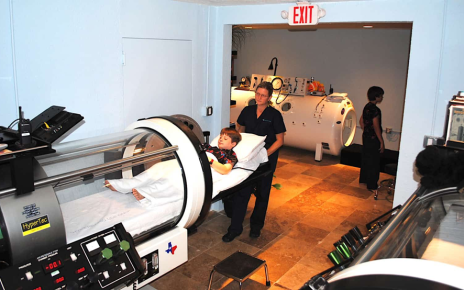Ever had a “gut-wrenching” experience? Felt “butterflies” in your stomach before a big presentation? That’s not just poetic language. It’s a real, biological conversation happening inside you, right now. Welcome to the gut-brain axis—one of the most fascinating discoveries in modern wellness.
This isn’t just about digestion anymore. We’re talking about a literal superhighway of communication between your enteric nervous system (that’s the complex network of neurons lining your gut) and your central nervous system (your brain and spinal cord). They’re in constant, chit-chat, and what they’re saying directly impacts your mood, your stress levels, and honestly, your overall mental wellness.
Your Second Brain: It’s Not Science Fiction
Let’s dive in. Your gut is often called the “second brain,” and for good reason. It contains over 100 million nerve cells—more than your spinal cord. This vast neural network is in constant, bidirectional communication with the brain in your head via the vagus nerve, a massive cranial nerve that acts like a fiber-optic cable sending signals back and forth.
But here’s where it gets really interesting. The main messengers in this chat aren’t just nerve signals. They’re chemicals. And a huge portion of these chemicals are produced by your gut microbiome—the diverse community of trillions of bacteria, fungi, and viruses living in your intestines.
Meet Your Microbiome: The Tiny Tenants Running the Show
Think of your gut microbiome as a bustling, microscopic city. When this city is diverse and balanced, everything runs smoothly. But when the bad guys start outnumbering the good, well, that’s when trouble can start. These tiny tenants are powerhouse chemists, producing a vast array of neuroactive compounds.
In fact, it’s estimated that a staggering 90% of your body’s serotonin—the famous “feel-good” neurotransmitter crucial for mood, sleep, and appetite—is produced in the gut. Not in the brain. Let that sink in for a moment. Your intestinal bacteria are fundamental players in manufacturing the very chemicals that make you feel happy and calm.
They also produce GABA (a neurotransmitter that helps calm nerve activity), dopamine (involved in reward and motivation), and a slew of other molecules that send signals up the vagus nerve to your brain.
How the Chatter Goes Wrong: Inflammation and Leaky Gut
So, what happens when the conversation turns sour? An imbalanced gut microbiome, known as dysbiosis, can kick off a chain reaction of inflammation. This inflammation can contribute to a condition often called “leaky gut,” where the lining of the intestines becomes more permeable.
Imagine a net with holes that are too big. When that happens, inflammatory particles and bacterial byproducts can “leak” into the bloodstream, triggering a system-wide inflammatory response. And chronic, body-wide inflammation is a key player in numerous issues, including anxiety, depression, and brain fog. It’s like a constant, low-grade alarm bell going off, and your brain is definitely listening.
Practical Steps to Nurture Your Gut-Brain Connection
Okay, enough with the problems. Here’s the good news: you are not a passive passenger in this process. You can actively influence this internal dialogue. It all comes down to lifestyle choices that support a healthy, diverse gut microbiome. Here are some powerful ways to get started.
1. Feed Your Gut Bugs What They Love
Your gut bacteria need the right fuel. That means two things: prebiotics and probiotics.
- Prebiotics: These are specialized plant fibers that act like fertilizer for your good gut bacteria. You can find them in foods like garlic, onions, leeks, asparagus, bananas, and whole grains like oats.
- Probiotics: These are the live, beneficial bacteria themselves. Fermented foods are your best bet here. Think yogurt with live cultures, kefir, kimchi, sauerkraut, kombucha, and miso.
2. Embrace a Rainbow Diet
Diversity on your plate means diversity in your gut. Aim for a wide variety of colorful fruits and vegetables. Each plant food contains different types of fiber and polyphenols that feed different strains of bacteria. The more diverse your diet, the more resilient your microbiome becomes.
3. Manage Stress—For Your Gut’s Sake
Remember, the communication goes both ways. Chronic stress can wreak havoc on your gut bacteria, reducing their diversity and weakening the gut lining. It’s a vicious cycle. Breaking it requires active stress management.
This doesn’t have to be complicated. Even 10 minutes a day of mindfulness, deep breathing, a walk in nature, or gentle yoga can send a powerful “calm down” signal through your gut-brain axis.
4. Prioritize Sleep and Movement
Poor sleep can negatively alter your gut flora in as little as 48 hours. Aim for 7-9 hours of quality sleep per night—it’s non-negotiable for mental and gut health. Similarly, regular exercise has been shown to increase the abundance of beneficial gut bacteria. You don’t need to run a marathon; a brisk daily walk can do wonders.
The Future of Mental Health is Holistic
We’re standing at the edge of a new frontier. The gut-brain axis connection is fundamentally changing how we view mental wellness. It’s moving us away from seeing the brain as an isolated organ and toward a more integrated, systems-based approach.
This isn’t to say that traditional approaches are invalid—far from it. But it adds a powerful, complementary layer. It suggests that supporting mental health isn’t just about what’s happening from the neck up. It’s also about nurturing the complex, vibrant ecosystem within our core.
The next time you feel a pang of anxiety or a dip in your mood, maybe instead of just looking outward, you can pause and look inward. What’s your gut trying to say? By nourishing that second brain, you’re not just eating for physical health. You’re feeding your mind, your mood, and your resilience. And that, you know, is a pretty powerful thought to digest.




